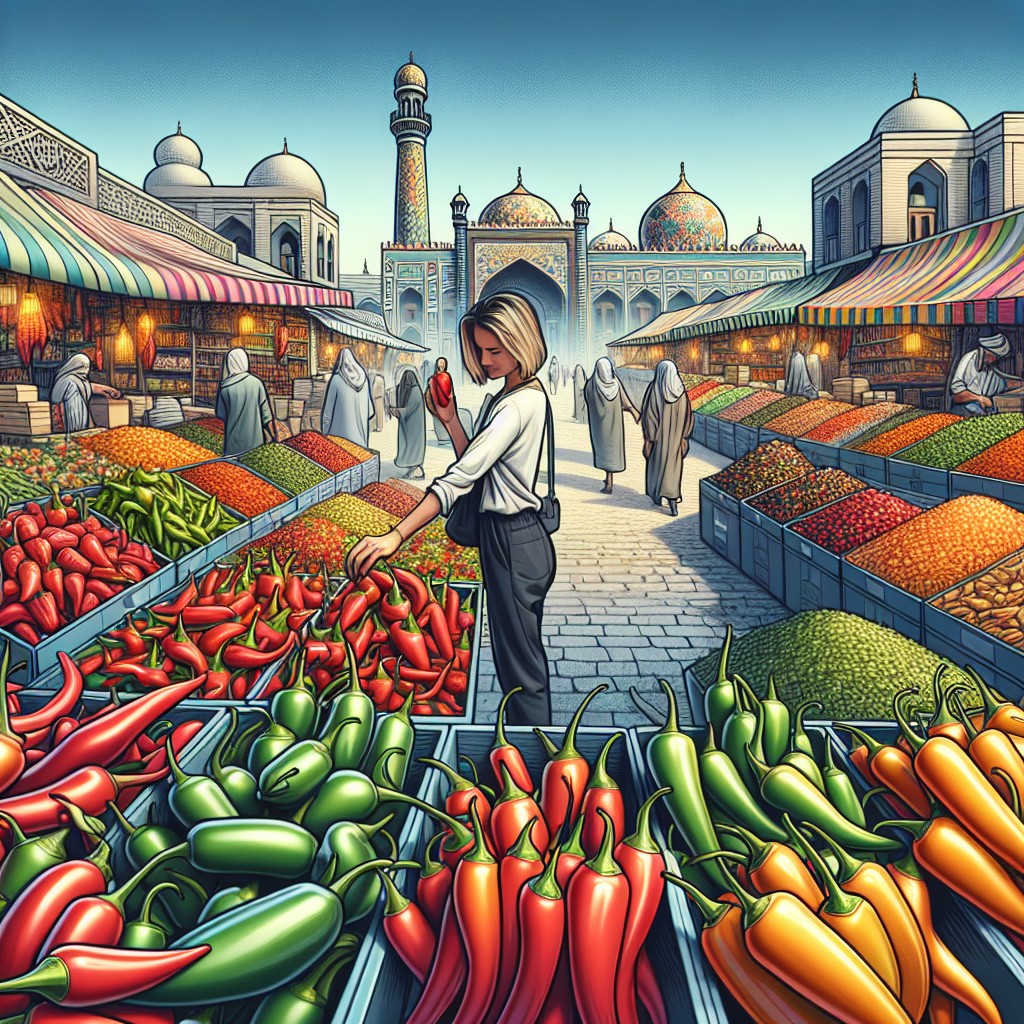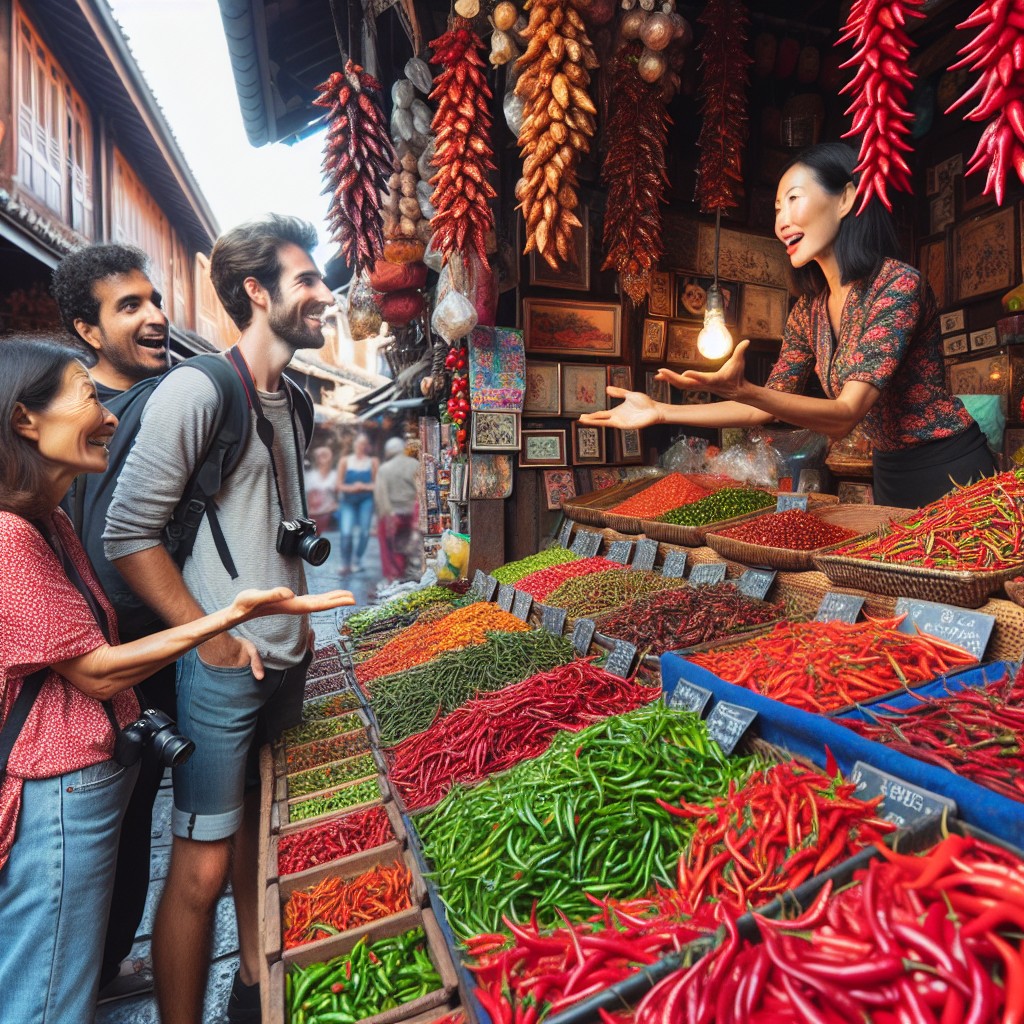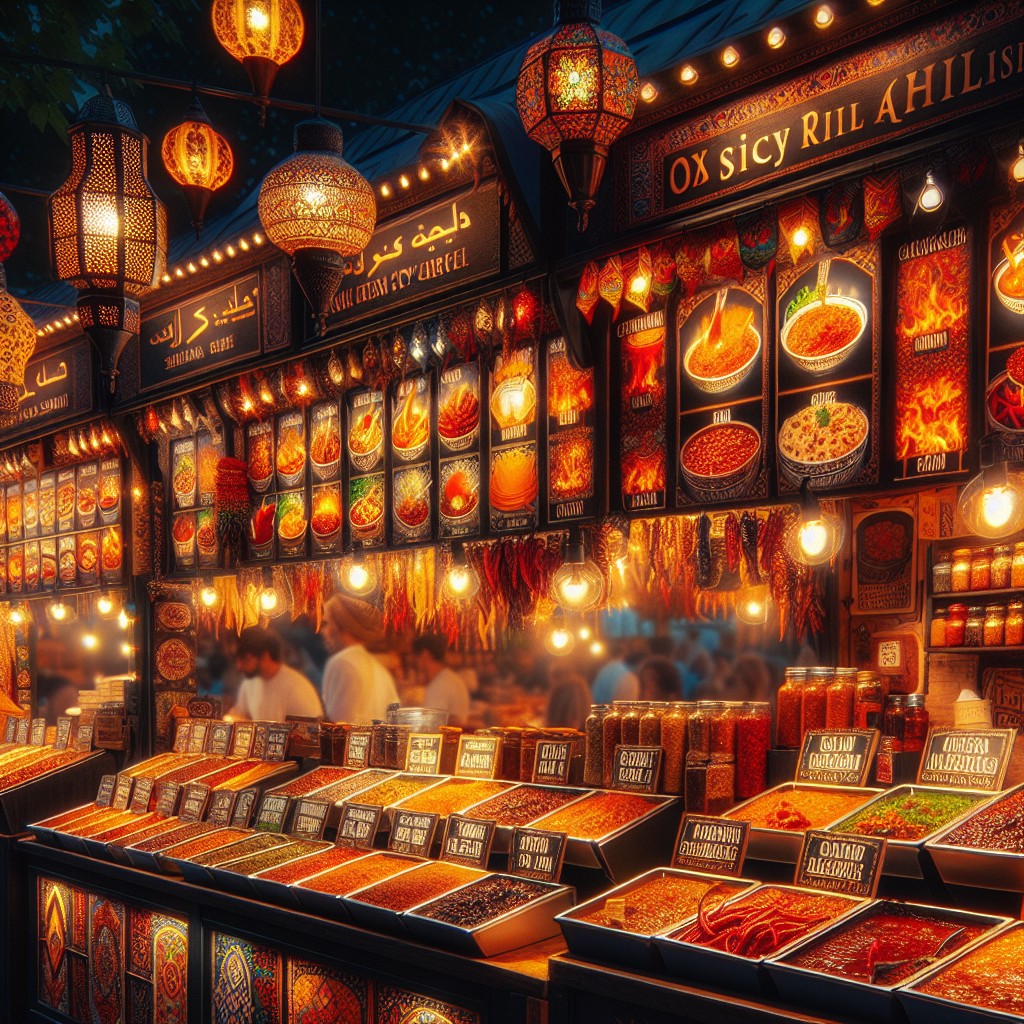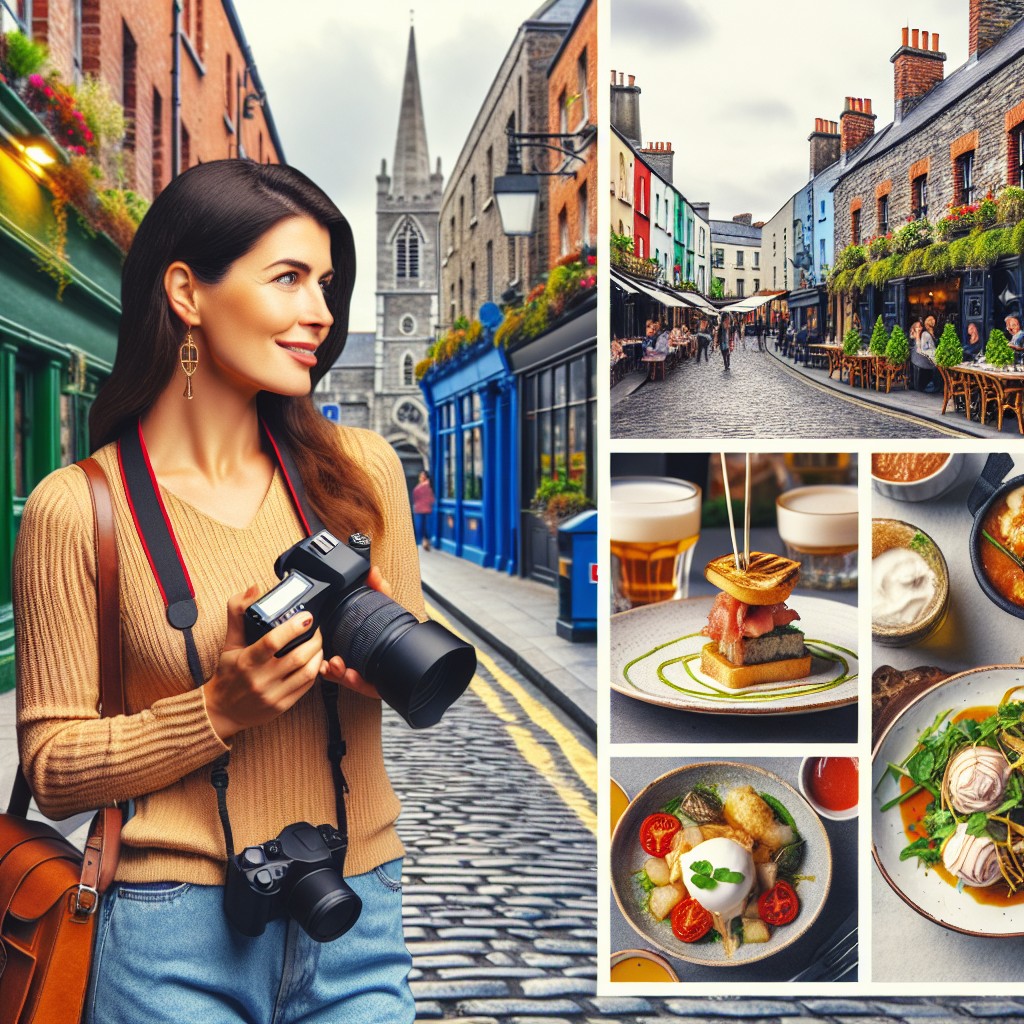Last updated on
Dive into the world of hot chilli food and travel adventures because each bite and destination offers a new intriguing tale of spice and culture.
Key takeaways:
- Understanding the spectrum of chilli flavors and intensities.
- Health benefits of spicy food, including weight loss and heart health.
- Exquisite hot chilli recipes from around the world.
- Notorious street food hotspots for spicy culinary adventures.
- Cultural etiquette and tips for documenting your spicy journey.
Table of Contents
Exploring the Heat

Diving into the world of chillis reveals a spectrum of flavors and intensities, from the mild bell pepper to the fiery Carolina Reaper. Each type offers unique tastes and benefits, from adding depth to dishes to boosting metabolism.
To understand and appreciate the heat, it’s important to:
- Learn about the Scoville Scale, which measures the pungency of peppers.
- Recognize the difference between capsaicin levels in various chilli species.
- Discover regional chilli varieties and their culinary uses.
- Experiment with cooking techniques that enhance or mellow the spiciness.
- Understand the health implications, both positive and potential risks, of consuming hot foods.
Grasping these elements not only enriches the travel and dining experience but also equips individuals with the knowledge to navigate the fiery side of cuisines around the globe.
Benefits of Spicy Food

Spicy foods aren’t just a means to challenge your taste buds—they also offer several health benefits. Capsaicin, the compound that gives chilli peppers their punch, has been linked to weight loss as it can increase metabolism and reduce appetite slightly. Furthermore, studies suggest that it may promote heart health by reducing cholesterol and blood pressure. There’s even evidence pointing toward a mood boost, thanks to the release of endorphins, the body’s natural painkillers, when consuming hot spices.
Additionally, the antibacterial properties of many spices can contribute to improved gut health. However, moderation is key, as excess spice may lead to digestive irritation for some individuals.
Exquisite Hot Chilli Recipes

Delve into a collection of recipes that turn up the heat and tantalize taste buds. Learn the art of balancing flavors with dishes such as spicy Sichuan mapo tofu, using fermented bean paste and Sichuan peppercorns to create a numbing sensation.
Try your hand at crafting the perfect Mexican habanero salsa, blending the fiery peppers with tomatoes, onions, and a splash of lime for a fresh kick.
For those who enjoy complexity, a traditional Indian vindaloo invites a symphony of spices like cumin, mustard seeds, and hot chilli powder.
Each recipe guides you through careful preparation of chillies to extract maximum flavor while managing heat levels. By understanding the core principles of these dishes, you can experiment with confidence and infuse your own creative touch.
Spicy Street Food Havens

Embarking on a quest to discover fiery street food leads to bustling markets and hidden alleys, where the air is thick with spices. Here’s a glimpse into some of the world’s most notorious hotspots for palate-tingling treats:
1. Bangkok, Thailand: Gastronomes flock here for the infamous Som Tam, a fiery papaya salad, and the intense heat of Thai bird’s eye chilies in street-side Pad Thai.
2. Mexico City, Mexico: Tacos al pastor and salsa-topped elotes boast a symphony of heat, challenging even seasoned spice veterans.
3. Seoul, South Korea: Tteokbokki, these spicy rice cakes swim in gochujang (Korean red chili paste) for a perfect balance of sweet and heat.
4. Chengdu, China: Experience the tingling sensation of Sichuan peppercorns in authentically prepared Mapo Tofu from a fragrant food stall.
5. New Orleans, USA: Not all spicy food has to sear; Creole and Cajun cooking demonstrate a tempered yet complex heat.
As you plan your spicy street food tour, consider the nuances of local chilies and cooking techniques. Each destination offers unique levels of heat and flavor profiles, inviting you to expand your spice tolerance and immerse yourself in the culture behind these piquant dishes.
Chilli-Themed Festivals
Annually, fiery food enthusiasts gather at chilli-themed festivals worldwide to celebrate their love for heat. These festivals offer an array of activities beyond tasting, such as chilli cook-offs, eating contests, and cooking demonstrations.
- Cook-offs showcase the creativity of competitors as they infuse chilli into various dishes, challenging both their culinary skills and the spice tolerance of judges.
- Eating contests push the boundaries of participants’ spice thresholds, often featuring some of the hottest peppers on the Scoville scale, like the Carolina Reaper.
- Cooking demonstrations provide attendees with valuable insights into preparing and cooking with different types of chillies, along with tips on balancing flavors.
Festivals also immerse visitors in educational experiences, teaching about the history of chillies, their cultivation, and their role in cuisines around the globe. Artisans sell chili-related products ranging from seeds and plants to spicy sauces and crafted goods, providing a unique take-home element. Whether a seasoned spice lover or a curious foodie, these festivals deliver an intense sensory experience.
Preparing for Spicy Adventures
When gearing up for culinary travels where heat is the main event, a keen palate and some forethought are crucial. Start with gradually increasing the spice levels in meals to build tolerance. Remember to pack antacids and know the local remedies for cooling the burn— dairy products like milk or yogurt can be lifesavers.
Research the region’s pepper varieties to anticipate their heat levels and flavors. Stay hydrated, but avoid water during a spicy meal as it can spread the capsaicin— the compound that makes chili hot. Instead, opt for milk, beer, or even sugar-based drinks to quell the fire.
Lastly, ensure your travel insurance covers health, as some may find extreme spices more than their stomach can handle.
Cultural Etiquette
Navigating the diverse customs around the globe enhances the travel experience, particularly when it concerns cuisine. Respecting local traditions when partaking in fiery dishes is essential:
- Research dining etiquette for your destination to avoid faux pas. Some cultures consider certain behaviors at the table, such as refilling your own drink or eating everything on your plate, to carry specific meanings.
- Ask for spice levels before diving in, showing appreciation for the culinary craft and attention to your comfort.
- Use ‘please’ and ‘thank you’ in the local language, signifying respect towards the chef and the culture.
- If a dish is too spicy, refrain from overt negative reactions, which can be seen as impolite. Instead, politely set it aside or eat around the hotter elements.
- Observe locals for cues on how to handle dishes with extensive heat. Some cultures use bread or rice to temper spice, a useful tip for travelers.
Remember, embracing these nuances can lead to a richer engagement with the fiery delights each place has to offer.
Documenting Your Journey
Capturing your culinary travels requires a keen eye and genuine storytelling. A well-maintained journal, either physical or digital, enables you to note first impressions and detailed experiences that can fade over time.
Illustrate the intensity of each dish with vibrant photography that showcases the vivid colors and textures of chilli-based cuisine. Use video to convey the atmosphere of local markets and the hustle of street food stalls.
Leverage social media for real-time updates, engaging followers with your spicy discoveries. Always seek permission before photographing locals or their wares. Remember, hashtags related to hot chilli food can expand your audience and connect with fellow spice enthusiasts.
Keep backups of your memories to safeguard against technical mishaps, ensuring you’ll have these spicy memories for years to come.
Professional Food Styling & Writing
Captivating visuals and compelling narratives transform a simple meal into a gastronomic tale. Professional food styling elevates the presentation of spicy dishes, ensuring that the vibrant colors and textures of the chillies are highlighted.
To achieve this, consider the following:
- Utilize natural light to bring out the glistening sheen of sauces and the subtle steam rising from a hot dish.
- Choose simple, earth-toned dishware that contrasts with the fiery reds and oranges of chilli-infused meals, making the colors pop.
- Introduce fresh, non-cooked chilli peppers into the frame to convey the source of heat.
- Apply a mist of water or oil to provide freshness and a tantalizing appeal to cooked dishes.
In parallel, engaging writing is crucial for sharing your culinary experiences and insights with readers. Here are tips to sharpen your narrative:
- Start with an anecdote or a personal experience to draw readers into the sensory world of hot chilli foods.
- Use descriptive language to impart the taste, aroma, and sensation of the dish, conveying the heat level and flavor profile.
- Share the origin of the dish and the cultural significance of the chillies used, providing context for your readers.
- Incorporate quotes from chefs or locals to add authenticity and depth to your story.
By mastering these techniques, you can craft striking images and stories that celebrate the fiery world of chilli cuisine, making your blog a tantalizing destination for food and travel enthusiasts.
Top Places in the World for Hot Chilli Food
Mexico stands as a powerhouse in the chilli department, with dishes like tacos al pastor and habanero salsas igniting the palate. Oaxaca, in particular, is renowned for its rich mole sauces that blend chocolate and fiery chillies.
India, home to the vindaloo and phaal, offers a culinary quest for spice seekers. Goa’s seafood dishes and Rajasthan’s meaty fare consistently deliver heat courtesy of the local ghost peppers.
Thailand boasts a myriad of dishes where bird’s eye chillies take center stage. Bang for your buck heat can be found in som tam salads and fiery pad Thai from the bustling streets of Bangkok to the night markets of Chiang Mai.
The Sichuan province in China is synonymous with the spicy, numbing flavor of Sichuan peppercorns. Authentic kung pao chicken and mapo tofu challenge even the most seasoned spice aficionados.
The United States contributes with Creole and Cajun cuisines in Louisiana, where cayenne pepper reigns. The legendary hot chicken of Nashville, Tennessee, drenched in a cayenne-infused glaze, promises an unforgettable burn.
South Korea offers a spicy kick with its kimchi and the fiery tteokbokki, a popular street food made with chewy rice cakes in a sweet red chili sauce that has a sneaky heat that builds with each bite.
Each destination not only provides a test of one’s spice tolerance but also a glimpse into the rich cultural traditions that celebrate the beloved chilli in all its varieties.
You may also like to read:





